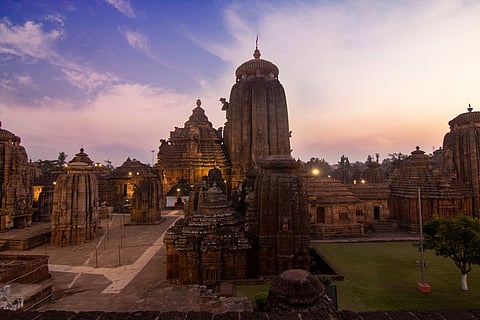
- Destinations
- Experiences
- Stay
- What's new
- Editor’s Picks
- Responsible Tourism
- CampaignsCampaigns
- Subscribe

Amid reports of cracks and seepage at the Lingaraj Temple, a prominent Shiva temple in Odisha's Bhubaneswar, the Archaeological Survey of India (ASI) will use 3D laser scanning to examine the temple premises. The scanning aims to identify the degree of damage to the 11th-century Lingaraj temple.
The 3D laser scanning and a photogrammetric survey will ascertain the temple's status, stress levels, and any existing cracks. According to officials, a comprehensive evaluation of the temple needs to be done to find out about its condition in detail.
As per reports, a delegation from the Archaeological Survey of India recently assessed the primary shrine and other shrines within the temple's premises to gauge their current state. The officials will conduct a thorough survey after obtaining permission from the temple trust authority. This step will enable them to proceed with conservation and preservation efforts.
The ASI has reportedly also requested the temple trust to thoroughly clean the plastics and debris accumulated within the temple premises. The trust has been advised to remove vegetation on the temple towers amid reports of weeds growing within the central temple area.
Considered one of India's finest Hindu temples, the Lingaraj temple stands 180 feet tall and represents the pinnacle of temple architecture in Bhubaneswar—the birthplace of the Kalinga School of Temple Architecture.
The extensive temple complex features 150 smaller shrines alongside the main one. The temple's central feature is a self-originated shivling (a representation of Lord Shiva) known as 'Swayambhu.' It also showcases the blend of Shaivism and Vaishnavism sects in Odisha. The shivling is referred to as "Hari Hara."
Another attraction of the temple is Bindusagar Lake, situated on the temple's northern side. This 1300-ft long and 700-ft wide lake is a focal point for the people of Old Town and a central spot for temple festivities.
On the western banks of Bindu Sagar, there's Ekamra Van garden, named after Hindu mythological texts that referred to Bhubaneswar as Ekamra van, meaning a forest with a single mango tree. The garden hosts a variety of plants traditionally linked to Hindu deities, carrying spiritual and medicinal significance.
